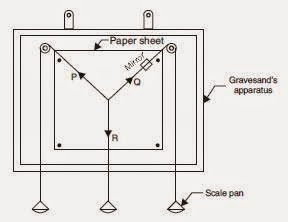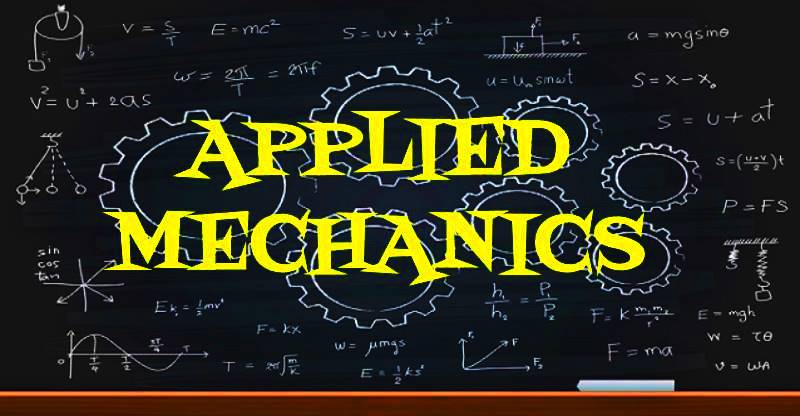EXPERIMENT
OBJECTIVE:
To verify the parallelogram law of forces with the help of Gravesand’s apparatus.
APPARATUS REQUIRED:
Gravesand’s apparatus, paper sheet, slotted weight, thread, pans, set square, pencil, mirror strips, cello tape, geometrical box etc.
THEORY:
Parallelogram law of forces states that if two concurrent forces acting on a particle be represented in magnitude and direction by the two sides of a parallelogram, then their resultant may be represented in magnitude and direction by the diagonal of the parallelogram drawn from the same point.

PROCEDURE:
- Fix the paper sheet with cello tape on the board set in a vertical plane such that it should be parallel to the edge of board.
- Then take a thread and pass it over two pulleys. The end of the threads are to be attached to the slotted weight.
- Now take another thread and tie it to the middle of the thread and attach other end to the slotted weight.
- Place slotted weight in the three hooks in such a manner that the knots comes in the centre of the paper.
- Displace them from the position and note if they come to the original position to ensure that the pulley have minimum friction.
- To mark the line of action of these forces place plain mirror below each thread coinciding with image of the thread in the mirror.
- Write down the magnitude of the force along the line to meet at a point O.
- Choose a suitable scale for weight and draw the line OB, OA and OC proportional to the scale.
- Complete the parallelogram drawing BC parallel to OA and AC parallel to OB meeting at point C. Now OC is the diagonal of the parallelogram.
- Convert the length into force (R) and check whether it is equal to P1 or not.
- If R is not equal to P1 then calculate the error.
- Repeat the experiment at least two times.
OBSERVATION TABLE:
| S. No.
|
Force along OA (in grams) |
Force along OB (in grams) |
Force along OD (in grams) |
Observed value of resultant OC (in grams) (graphically) |
Percentage error between OC and OD = (OC – OD)/ OC x 100 |
PRECAUTIONS:
- Positions of points should be marked very carefully with pointed pencil with the help of the plane mirror.
- There should not be any knot on the thread expect the centre knot which should be small and fine.
- The Weights should be attached at the ends of the threads.
- Pulleys should be lubricated properly to minimize friction.
- Weights or pans should not touch the wooden board.
RELATED VIDEOS FOR PARALLELOGRAM LAW OF FORCES:
